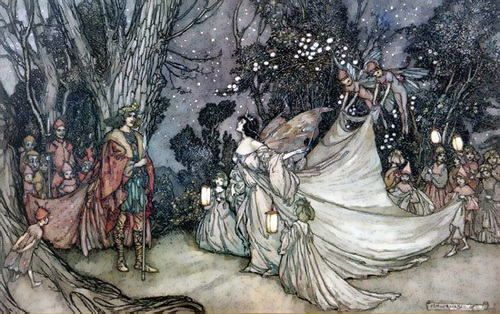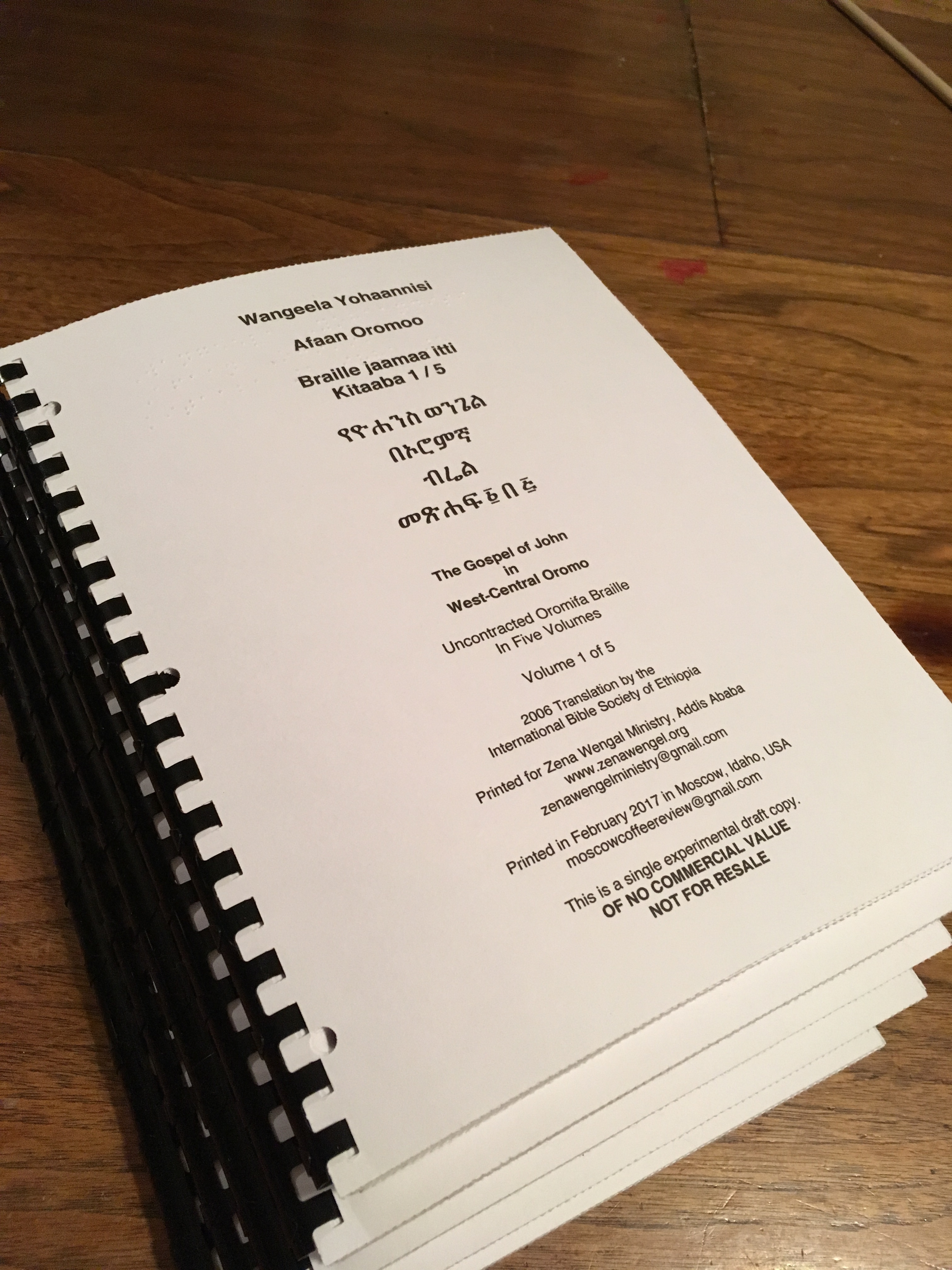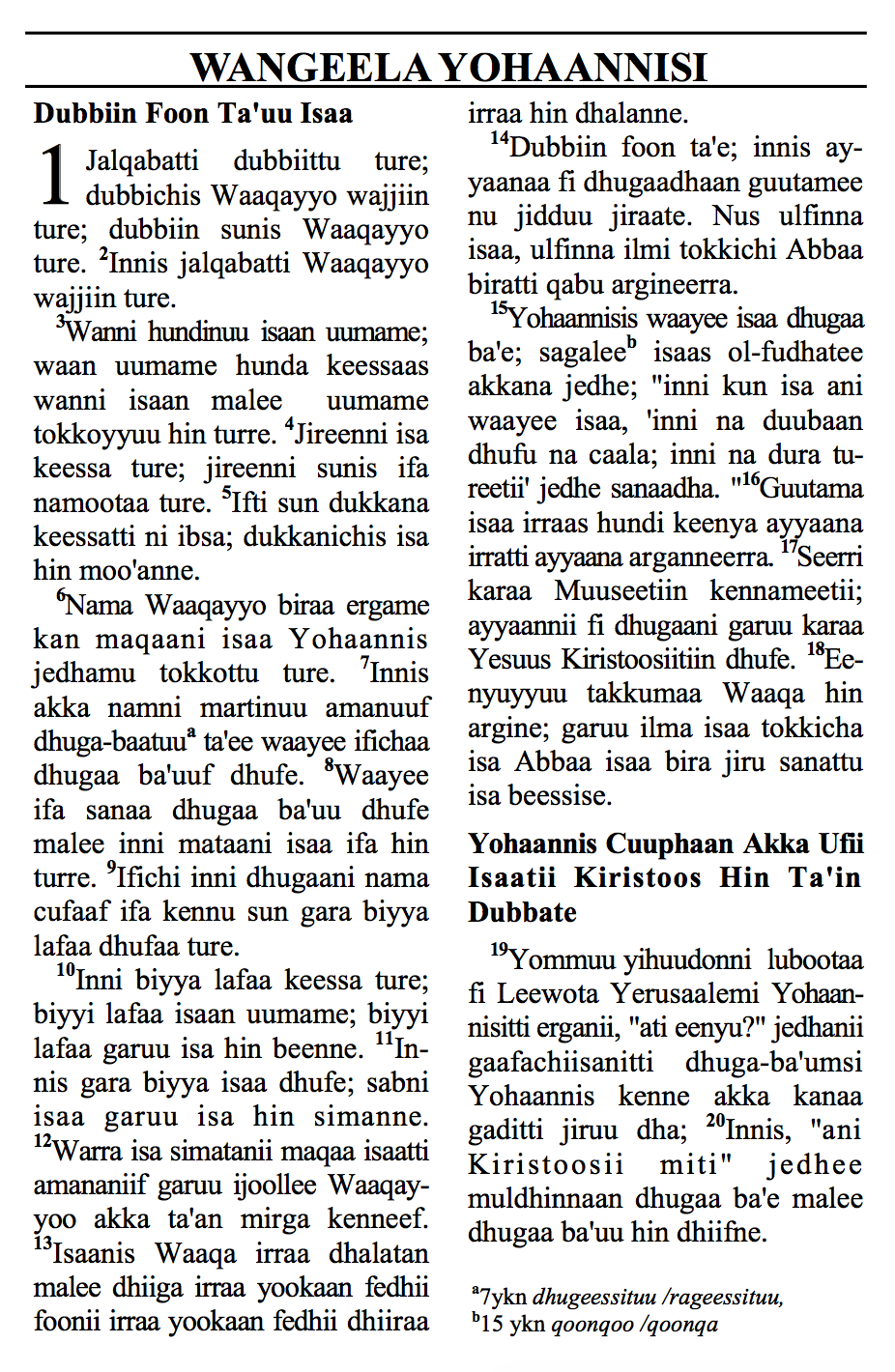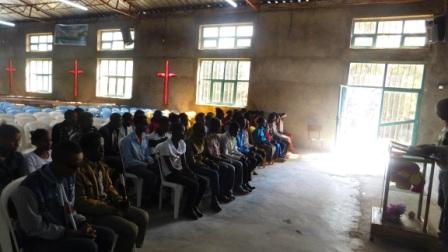I’ve had this book on my to-read list forever and my wife got it for me for Christmas so I finally got to it in January. It was especially fun to read while recently coming back from Ethiopia and in the middle of working on learning some Oromo words to help me format a copy of the Gospel of John in Oromifa for some friends there.
This was a rich book, but the prose made it a rather difficult read. Here I’ve copied down a few of the most interesting passages with occasional brief commentary.
—
One can see the church as going through different stages of development. Syncretism is when it absorbs non-Christian beliefs and practices from the world surrounding it. Reform is actively working to improve things by adjusting practices and articulating beliefs better to correct for drift over time. Quarantine is withdrawing or trying to shut out the world in some way to avoid corruption. That’s a really simple way of defining those three things anyway. One can talk about them as if they happen in cycles, but I think I’m with Sanneh here in believing they can be going on concurrently.
Quarantine, syncretism, and reform must not be understood in exclusive terms, for there is a natural overlap among them. In the event, it would be better to think of them not as successive stages but as types and styles of religious organization and activity, sometimes all existing together, whatever the degree of intensity in each case. What actually happens may be a function of place and circumstance rather than of precise temporal sequence.
p.?
—
Fluent in the vernacular, converts viewed Westernization in the church differently. They recited the creeds but in accents of their own. The polemical tone of the Nicene Creed, with its triumphalist swipe at vanquished heresies, for example, dissolved into chastened prayer of interession of the powers of the spirit world. The enemy was not someone else’s theology: it was the nemesis of one’s own spirit world. Spiritual warfare required spiritual aid, not philosophical theory, and for that the vernacular Scriptures as written oracle were well suited.
p.57
I loved this paragraph about how the creeds and other pieces of what we consider very propositional pieces of theology or scripture were spontaneously repurposed as tools of spiritual warfare by those not steeped in the Western intellectual tradition. Perhaps a better use for them!
—
Here, Sanneh argues that translation made Christianity (and still makes it today) natural allergic to attempts to make practice strictly dictated by theology.
As Irenaeus contents, an elitist theology is inclined to oppose adaptive response to the message because elites prefer uniform rules to real-life resourcefulness. So the sun and the community, as respecitive symbols of doctrine and culture, and mutually exclusive or at least are in tension. The preferred way of dealing with this tension is to make religious practice subordinate to theology. That was how minimalism – and its attendant rationalism gained the ascendancy it did.
However, the successful implantation of Christianity in a great variety of soils could scarcely be impeded by the bounds of theory, so diverse and apparently conflicting are the channels God uses to promote the kingdom. A central cultural mandate imposed upon this diversity placed unbearable strain on historical experience, and thus led to considerable local tension and contention.
p.75
—
Good quote:
“for weak and fragile is a kingdom with one language and custom” (nam unius linguae, uniusque moris regnum imbecille et fragilum). St. Stephen (Hungary)
p.77
—
Excellent example of a crazy idea that can come from taking a piece of scripture in isolation way too seriously:
The Franks had contended that the liturgy could be performed only in the tree ancient languages of Hebrew, Greek, and Latin, on the grounds that Pilate had used those to compose the inscription placed on the cross of Christ (Luke 23:38). Pilate cound scarcely have suspected the use he would be to the champions of the Way of Jesus.
p.83
—
The translation role of missionaries cast them as unwitting allies of mother-tongue speakers and as reluctant opponents of colonial domination. The contention of the primitive church that the affairs of empire pale into insignificane when contemplated in the light of God’s kingdom (Rom. 8:18-25, 31, 35-39; Phil. 3:20; Gal. 4:26) found a historical parallel in our day in the ferment between rising Christianity and a contested colonialism.
p.95
Throughout the book, Sanneh pushes back against the contemporary narrative that Western missionaries were instruments of colonial oppression. In some respects they were, but in translating the scriptures, often creating writing systems in the process, they ultimately ended up empowering the locals against colonization.
—
Without a revealed language or even the language of its founder, Christianity stakes itself on idioms and cultures that existed for purposes other than for Christianity, and to that extent Christianity came with a predisposition to embrace the marks of our primary identity. A mother-tongue response is in tune with the gospel. Accordingly, in its cultural aspects, the Christian movement provided the impetus for the flowering of a diverse and distinctive humanity by introducing the idea that no culture is inherently impermeable, nor is any one ultimately indispensable. To be grounded in your culture and to be a faithful Christian are complementary.
p.97
(emphasis mine)
—
Albeit we may not disallow of their painful traves herein, who strictly have tied themselves to the very original letter; yet the judgement of the Church… hath been ever that the fittest for public audience are such as following a middle course between the rigour of literal transaltion and the liberty of the paraphrasts, do with greatest shortness and plainness deliver the meaning of the Holy Ghost. Which being labour of such great difficulty, the exact performance thereof we may rather wish than look.
-Richard Hooker, Of the Laws of Ecclesiastical Polity, on bible translation
Hooker is so good. Via Media strikes again, this time in the realm of bible translation. Also “the exact performance thereof we may rather wish than look” – ha! That’s a nice way to say “easier said than done.”
—
On how our great access to knowledge serves to dilute it’s grandeur and power in our imagination.
With the great turnover in current Bible translations the modern world has acquired habits it can ill afford – habits, that is, of language and culture as trivial, dull, uprooted, and deletable, of language and culture as free floating, ephemeral space of a commitment-free, future-negating, mood-enhancing existence. We have become virtual hunter-gatherers for whom hunting has no borders, kinship, mystery, purpose, or trophies worth inheriting, and for whom gathering is simplu self-enhacement.
p.119Can the Bible be read in a socially advanced society with anything like the immediacy it offers in a community less blessed with a large service sector and abundant information technology? If not, must spiritual seekrs in the ‘advanced’ world inevitably try to find religious sustenance in spurious or overhyped pseudo-scriptures like the Gnostic gospels, while the authentic Bible is left for the world’s poor and uneducated?
-Philip Jenkins, 2004, footnote from p.119
—
As is well known, [Willaim] Carey and his colleagues made few conversion inroads into India. The importance of their work lay less in statistical gains than in their brilliant development of the vernacular, and that notwithstanding their selfavowedly evangelical motives. On the contrary, it was his evangelical faith that led Carey to explore the world of India in its religious, linguistic, botanical, and social diversity. No barrier of unfamiliarity, no obstacle of ignorance or suspicion was strong enough to restrict of empede what he considered to be the universal scope of the gospel. Consequently, he expended himself in fields far removed from making converts, though he still remained true to his religious calling. He initiated a number of projects, including “modern education, new conceptions of agriculture, new industries, the first steam engine, the first Indian newspaper, great movements of social reform, and had a major part in translating the Bible into four languages” (North 1938, 3). If the fruits of his labor seem far removed from the trophies of evangelical proselytization, they remain, nevertheless, the undeniable handiwork of his religious vocation.
p.139
This is very interesting to me. Here is an example of someone serving God to profound effect, but not in the proper (evangelist, church planter) way. I have had more that a few people tell me this is, in fact, impossible. Digging further into it, I discovered that William Carey’s optimism in mission work was due to his postmillenialism(!!!). This idea is long gone from the mission work that followed his, but it makes me wonder if he was on to something.
See http://contra-mundum.org/schirrmacher/careypostmil.html for more details.
—
On how the languages of “primitive” people’s can end up being just as sophisticated as the seemingly most highly developed ones.
Some European students of the language [Livingston] said, may imagine that there would be few obstacles in mastering the tongue of a primitive people, but his own experience was different:
In my own case, though I have had as much intercourse with the purest idiom as most Englishmen, and have studied the language carefully, yet I can never utter an important statement without doing so very slowly, and repeating it too, lest the foreign accent… should render the sense unintelligible… The capabilities of this language may be inferred from the fact that the Pentateuch is fully expressed in Mr. Moffat’s translation in fewer words than in the Greek Septuagint, and in a very considerably small number than in our own English version. (Livingston 1957, 114)
p.145
—
What we should stress here is that the pressure to articulate Christian insights with reference to the Hindu environment will escalate for the church if it in turn takes seriously its missionary obligation. Mission will be the crucible in which Indian Christians will become enmeshed in the world of vernacular self-understanding, with equally inevitable implications for the vernacular itself. for these Christians, India was no ephemeral.
p.141
Now for an interesting exercise, try replacing ‘India’ in the above paragraph with ‘America’. Also imagine someone speaking it today:
What we should stress here is that the pressure to articulate Christian insights with reference to the modern secular American environment will escalate for the church if it in turn takes seriously its missionary obligation. Mission will be the crucible in which American Christians will become enmeshed in the world of vernacular self-understanding, with equally inevitable implications for the vernacular itself. for these Christians, America was not ephemeral.
—
On the emotional power of your first language:
Men need two kinds of language, in fact; a language of the home, of emotion, of unexpressed associations; and a language of knowledge, exact argument, scientific truth, one in which words are world-current and steadfast in their meanings. Where the mother tongue does not answer both needs, the people must inevitably become bilingual; but however fluent they may succeed in being in the foreign speech, its words can never feel to them as their native words. To express the dear and intimate things which are the very breath and substance of life a man will fall back on the tongue he learnt not at school, but in the house – how, he remembers not. He may bargain in the other, or pass examinations in it, but he will pray in his home speech. If you wish to reach his heart you will address him in that language.
-Edwin Smith (translator of NT into Ila language of Zambia), 1930, 8
p.146
—
On how diversity is good:
This idea was expanded by Venn’s observation that although churches might be united in devotion and obedience to Christ, it was impossible that “distinctions and defects will vanish… But it may be doubted whether, to the last, the Church of Christ will not exhibit marked national characteristics which, in the overruling grace of God, will tend to its perfection and glory” (Knight 1880, 284; cf. Walls 1981, 48, and Warren 1971, 77). Venn’s observation was an acute sight into variety as a mark of Christianity.
p.169
—
The older I get, the more important ecumenicism seems to be to me. The fact that even in the toughest times, Catholics and Protestants have been able to put aside their differences and work together to translate and communicate scripture better gives me a lot of hope.
Denominational rivalries did, admittedly, introduce suspicion and misunderstanding in many communities, which would have led to deleterious consequences except for the mitigating influence of the vernacular Scriptures. All the major Protestant denominations were forced to set aside their difference and pool resources to make the Bible available in authentic translations. As Tom Beetham (who?) ob served, “The process of translation helped to heal the divisions of the Church… What has brought Protestant missions together more than anything else has been the fellowship in the work of translation of the Bible” (Beetham 1967, 55). one evidence of this fact has been increasing cooperation between Catholics and Protestants. “Protestant versions in a number of languages have been used through the years by Catholic missions”. A new and active sense of ecumenical solidarity has grown between Catholics and Protestants in translation projects, with joint work now in process in 170 areas. And what helped to overcome denominational resistance also worked to enlarge the scope of mutual understanding in Africa.
p.204
—
In vernacular translation and literacy, however, missionary methods were a great deal more effective, however unintended the consequences. With the help of vernacular Scriptures, for example, Zulu Christians found saction for their custom of dressing in skins (Gen. 3:21), and began to criticize missionaries for not being property dressed according to the scriptures. they voiced a similar criticism with regard to church services, with Africans insisting that missionary churches were unfaithful to the Scriptures, which call for dancing and music in worship and singing (Judg. 11:35, 1 Sam 18:6; 2 Sam. 6:14; Ps. 149:3; 1 Chron. 15:16; Luke 7:32; 15:25; Matt. 11:17). As for the custom of singing, Africans found in the scriptures a stream in full spate. No amount of missionary resistance could stand in their way.
p.213
A great and challenging anecdote. Similar reasoning was used by the charismatic church I attended in college for the use of dancing during worship. I think it’s still a pretty difficult-to-refute argument.
—
On the power (and interesting side effects) of calling God’s name in your mother tongue.
The “thorough knowledge of native customs and beliefs” required for effective communication points to the vernacular projects of mission and to the benchmark of “the eloquence of the native assembly.” In the process of introducing Christianity to societies beyond the West, God as an exclusive, jealous deity made way for local ideas of inclusion in the religious as well as the social spheres. When ndina or another indigenous equivalent is adopted as the God of Scripture, worship in God’s name elicits the full range of religious associations of the indigenous term. When converts prayed to the God of Jesus Christ as ndina, for example, they created an overlap with older notions and practices.
This does not deny that Christianity represented real change, only that it facilitates change by helping to resolve moral dilemmas and dealing with inbred fears and anxieties. As E. Bolaji-Idowu (1962, 209), one of Africa’s leading theologians, put it, Christianity enlarged the people’s vision, freed their minds from the shackles of superstition and the irrational, and liberated their spirits from besetting fears. Thus empowered, Africans could make the choice that Christianity demanded. The key remained the vernacular and its cultural magnetic field. Mother tongue Scripture was the standard bearer of God’s message, and the local believers’ trump card against foreign devaluation. It enshrined and sanctioned local understanding in the people’s own natural idiom, and often it spawned a people’s movement in church and society. Choice is empty without change.
p.214
—
Some more fun and thoughtful anecdotes on scripture translation.
To the Zanaki people living along the shores of Lake Victoria, translating the sentence “Behold I stand at the door and knock” (Rev. 3:20) implied that Christ was declaring himself to be a thief, for in their culture only thieves made a practice of knocking on doors (to be certain no one was in). “An honest man will come to the house and call the name of the person inside, and in this way identify himself by voice” (Nida 1952, 47). The appropriate translation would therefore, be, “Behold I stand at the door and call.” Announcing oneslef in that way was delcaring one’s good intentions, which, it happens, gets at the sense of the text.
p.231The word for “song” means [in the Mandinka lanugage of Gambia], literally, “egg of a dance,” with the understanding that rhythmic bodily movement is incubated in vocal music util dance appropriately “hatches” from it.
p.237
—
Not related to translation really, but some interesting thoughts on how nature worship ends up devaluing nature where as worship of God enhances nature.
Yet the theological insight of creation and humanity as the independent handiwork of a divine agent also gives us a loaded view of nature and culture as manifest demonstrations of the divine mind, of nature as symbol and index of God’s power and wisdom. Creation separates, worship unites. When we look at order in creation and society we are instructed by its power upon the mind and feeling. We have a lively appreciation of the world as illuminative of God’s providence and purpose. The light of sun, moon, and stars is the garment of God, the drapery through which we glimpse something of God’s majesty (Ps. 104:2); thunder is God’s voice, and the thundercloud God’s dwelling place (Ps. 29:3-5, 18:11); the volcanic eruption is the divine heaving a sign (Ps. 104:32). The whole of creation, charged with the divine emeth (truth) is full of God’s emissaries and executors (Ps. 33:4, 6-9). The winds are God’s messengers, the flames God’s servants. The whole army of angels is at God’s command, cherubim and seraphim God’s charges (Ps. 18:10). By emptying nature of gods and divinities, by draining the plurality of nature of religious fragmentation, and by subduing the human impulse of pride, the ancient Hebrews allowed nature to be seen as God’s achievement rather than as an immovable object. There is a sense in which nature worship devalues nature. God, the Psalmist affirms, made nature a spouse for fruit, not a courtesan for diversion. Thus subordinated to God, nature and culture have a built-in rule of renewal provided they resist the temptation of pretending to be God. Only then are they free to convey something of God’s supremacy and munificence at the same time.
p.241
—
The Arab/Ethiopian dude Enbaqom mentioned in this paragraph sounds really cool. Unfortunately the only information about him comes from a book in Ge’ez that has only ever been translated into French, so I can’t read any more about him (yet!).
Similarly, with the introduction of Christianity into Ethiopia, schools were established, and by the middle of the seventh century most of the translation work into Amharic had been completed, with the Ethiopian Orthodox Church becomeing the nerve center of Ethiopian nationalism. The career of Enbaqom, a monk active at Debra Libanos in the fifteenth and sixteenth centuries and a convert from Islam, was devoted to translation and related theolocial interpretation. An Arab of Iraqi origin, Enbaqom was a student of several languages, including Portuguese, Latin, Copt, Ethiopian and his own native Arabic. His book, Anqasa Amin (The Door of Faith), he wrote as an apologetic work in response to the jihad of Ahmad Gran. In it Enbaqom defended Jesus against Muslim charges of idolatry (shirk), and, intestingly enough, defended Christianity’s multilingual translation of the Scriptures. Islam, he challenged, possesses a Qur’an that is restricted to a single language, Arabic, just as the Jewish Scriptures are restricted to a single language, Hebrew. Not so the gospel which is translated in all the languages available to Christians. The gospel message is not language-bound. For vindication, he lists several languages of Scriptures, declaring that cultural and linguistic variety secures the truth of the gospel, which is at home in all cultures and languages. Enbaqom was himself at home in many cultures, it seems. An Arab, he adopted Ethiopia and its language as his own. Furthermore, at the invitation of King Galawdewos, Enbaqom in his ripe old age was occupied with translating the Buddhist romance of Baralam and Yewusaf into Ge’ez (Donzel 1969). The work of Enbaqom is a convincing demonstration of how translation channeled internal religious and cultural transformation, and renewal of materials and sources that came in from outside. Translation achieved cultural naturalization and expanded other horizons as well.
p.258
—
In conclusion:
Bible translation is locked into that assumption, and is the basis of the Jewish-Gentile argument: the Jewish heritage is no more or less necssary for salvation as Greek materials, with the ironic twist that the Gospels were written in the inferior Greek of transitory populiations rather than in the hallowed tongue of Moses. Greek rather than Hebrew became the defining medium of Jesus’ teaching even though Jesus never spoke Greek. It left the gullible to speculate that perhaps Jesus knew Greek even if he did not speak it, showing how the force of the Greek medium in the Gospels has spawned definsiveness about it. Christians still struggle to acknowledge that their religion has been conveyed in languages unknown to the founder of their religion, especially when they claim normative authority for the affected languages. The declaration of Peter that God is no repsecter of persons (Acts 10:34-35) is still as contentious as when he first made it; two thousand years seem not to make an iota of difference.
p.240









